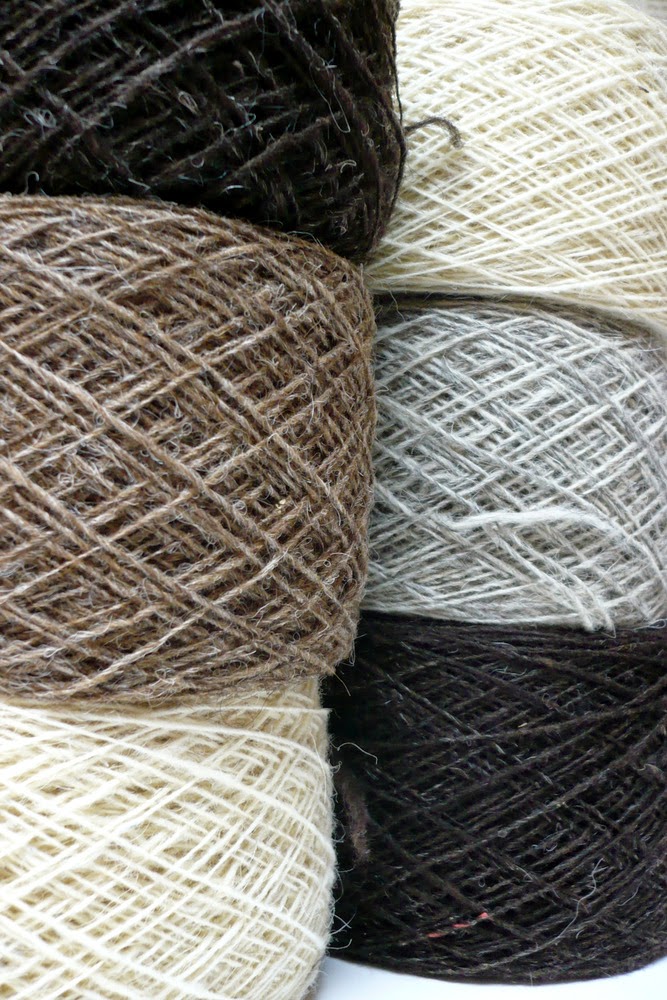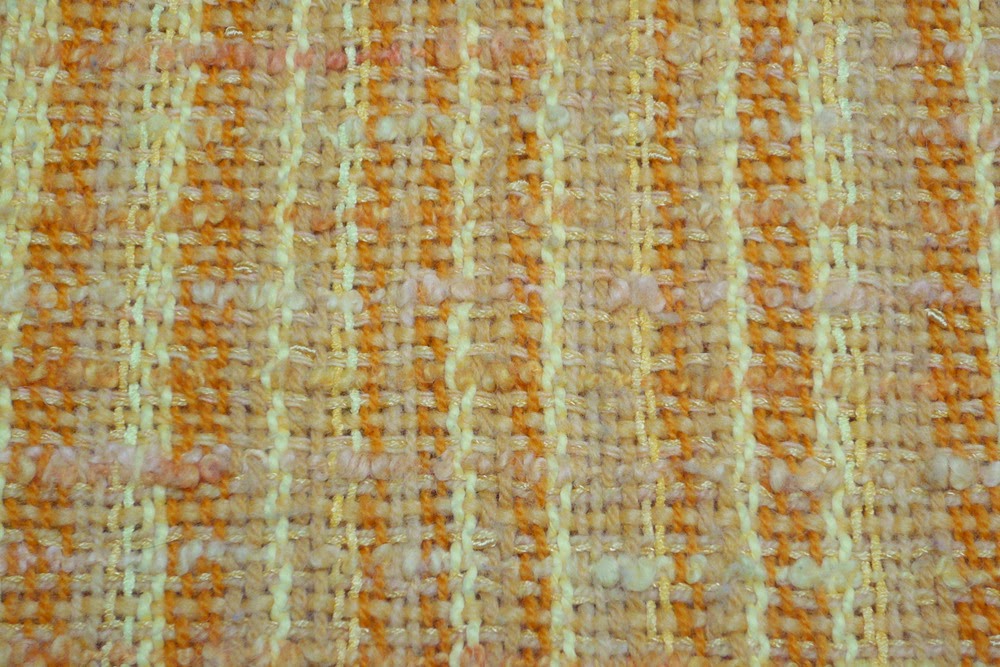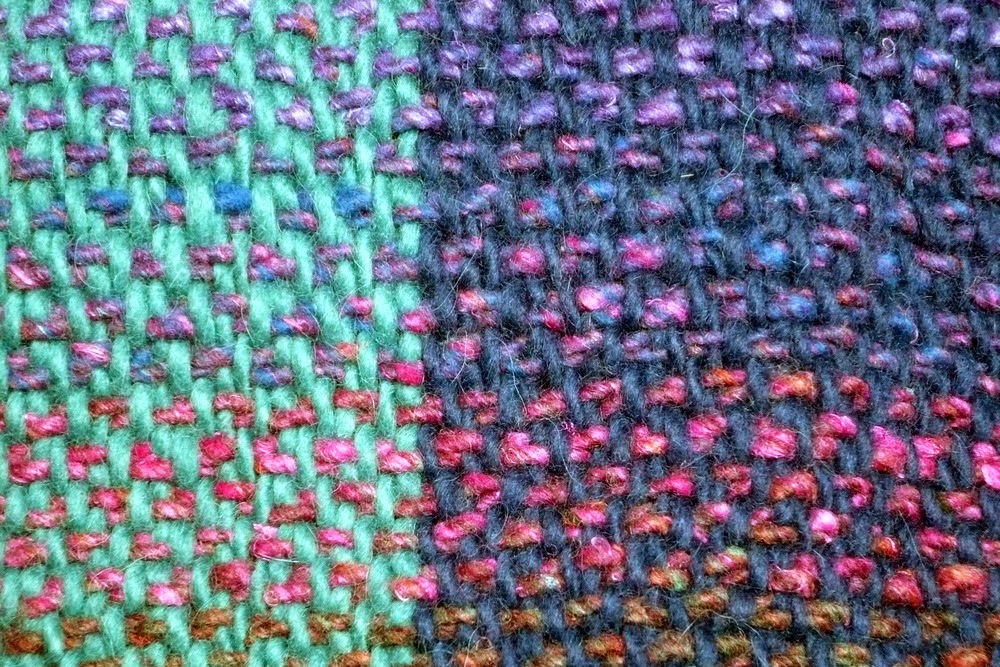This was originally an article I wrote for a spring 2014 edition of the Ottawa Valley Spinners' and Weavers' Guild newsletter
I began
spinning some six or seven years ago ... I think. Time has come to do weird things in my mind
these last years. My life seems to have
divided itself into three chunks: before I had kids, after I had kids, and when
I was a kid myself -- not necessarily in that order, and
the most recent chunk is the one of which my recollections seem the least
clear. But learning to spin came after I
had kids. And as time passes and I find
out more and more about spinning and how much there is to it that I don't yet
know, I kind of feel more and more like a beginner and less and less like I
have any idea what I'm really doing, apart from the fact that I'm having a good
time.
 |
| One of my very first skeins of yarn - alpaca with banana fibre |
And like
many spinners wending their way through this particular corner of the world, I
have found that I really and truly enjoy the whole process, taking the fleece
right from the sheep (well, right from the farmer who has taken it from the
sheep) and going through the whole washing, dyeing, combing, spinning she-bang. That's really the attraction, more so than
the finished product. People ask,
"And what will you do with this when you're done?" and I have no
sweet idea. Okay, sometimes I do. But generally that is never the point. Give it, sell it, weave it, knit it, add it
to my collection of handspun yarns that some day I'll do something with -- whatever. I'm not someone who plans ahead. I spin to enjoy the moment. Here I am, the wool is in my hands, could
life get better than this? To others be
the dry contemplation of the future.
 |
| Experimenting with solar dyeing - after spending a hot day on our sunny back porch wrapped in black garbage bags, the wool came out beautifully dyed |
My
discovery that there are many ropes to learn in the fleece-buying world will be
news to no one. Like everyone else, I've
spent a lot of time looking in all the usual places for raw fleece I want to
work with -- something that's not too harsh and
not too short and not so awfully vm-y that it will make me cry. It's nice to buy local; it's nice to buy
cheap. I've bought from near and I've
bought from far, online and in person, and my children and husband are getting
used to weekend drives involving stopping off at a farm somewhere and meeting
the sheepies. And I've made a lot of
terrible fleece mistakes. (Ah, the
stories I could tell...) As I said, I'm still learning and I have far to go.
 |
| Drying fleece along with the laundry - a purple day |
Some years
ago I came across Rupperts' Corriedales in Pennsylvania. They've cross-bred their Corries with
Australian Corries and they coat some of their flock for sale to
handspinners. They don't post pictures
of their fleece online as some farms do, but you can write in and get on their
waiting list and they'll send you a description of what's available when they
shear. Maybe three or four years ago I
bought my first smallish fleece from them.
It was beautiful -- lovely long staple, on the soft
side, and so clean and marvellous to work with.
It was my first coated fleece -- and you never forget your first coated fleece. But that box of fleece got a major ding in
custom service charges crossing the border, holy smokes. Not custom charges, not GST, it was just a
service for transporting it through customs.
Ouch. Two years later, I bought
two more fleeces from them, a Corriedale and a Cormo-cross, and this time they
tried mailing it differently in hopes of missing the custom service charge -- no luck, again a major extra
expense. So even though those fleeces were
amazing, even though they brought nothing but joy to my life, I had to come to
terms with reality and I promised myself:
never again. "Never
again," I told my husband.
"Never again," I said to the Rupperts' Corriedales
website. "Never again," I told
my empty bag of Corriedale fleece. I
just can't afford being fleeced for fleece.
Plus, I have a ton of fleece now.
A ton. What do I need with more
fleece -- even if it's irresistably beautiful
and brings joy to my life?
 |
| Raw Cormo fleece from Rupperts' Corriedales - so clean and beautiful it hardly looks lived in |
Then early this spring I got an email from the Rupperts telling me they'd done their
shearing and I was at the top of their waiting list and had my pick of the
crop. Inexplicable surprise. How did that happen? There was only one explanation: the fleece fairy had struck again! I knew it was a sign from the Spinning Powers
that Be, and one that shouldn't be ignored.
It's just not wise. So I went and
explained to my husband about the fleece fairy, and suggested it was probably
his idea that we could drive down and bring back the fleece ourselves rather
than pay that ridiculous custom service charge, and wasn't he clever to think
of it in the first place. He agreed (he is a clever guy, that's why I married
him), and Easter weekend we drove down to pick up the two fleeces I'd chosen
from my glorious position at the top of the waiting list: one Corriedale ram
and one Cormo ewe.
 |
| Equally clean and beautiful raw Corriedale fleece from Rupperts' -- such a contrast in character from the Cormo |
The farm is
just outside Gettysburg, so to make it seem more like a family weekend road
trip and less like spending a long weekend going to a farm really far away so Mum
could satisfy her bizarre wool addiction, we decided to drive direct to the
farm on Friday, meet the family, love the sheep, get the fleece. Then Saturday morning would be an
educationally satisfying exploration of Gettysburg, and Sunday a visually stimulating
scenic drive up through the Adirondack mountains.
 |
| Washed Cormo locks - soooooo soft and fluffy |
Alas. Although we'd counted on a certain delay
crossing the border, we had no idea it would take so long just to get through
the toll booth to cross the bridge to get to the border. ("What, you don't have sheep in
Canada?" asked the border official.)
We didn't arrive in G'burg until 8 pm, after dark. It wasn't an unpleasant entrance: the main
street is all quaint historic buildings and lined with pear trees which
happened to be in full majestic blossom, lit by old-fashioned street lamps, so
we had a spectacular drive around town.
But the kids were tired and wanted to stay at the hotel, claiming they'd
seen enough sheep farms for one lifetime, anyways. (Ha!
dream on, my pretties.) So my
husband and I bravely set off in the dark and picked our way through
complicated country roads with few road signs and no lighting to speak of and
somehow managed to find the farm.
Clearly, the fleece fairy was still smiling kindly down on the
expedition. Didn't meet the sheep -- didn't even meet most of the family
because they'd had to go out -- but there were my fleeces, all
bagged up and ready to go. Mummy's here,
my darlings!
 |
| Combed top ready to spin - Cormo (left) and Corriedale (right) You can kind of see that the Corriedale top is shinier than the Cormo |
And the
rest of the trip? Well, it
happened. And whatever was going past
our car windows on the outside, inside my brain was the constant refrain,
"Beautiful fleece, all mine, all mine!
Beautiful fleece, all mine!" And then at some point we arrived home
again.
 |
| Spun and triple-plied - Cormo (soft and stretchy) on top, and Corriedale (soft and lustrous) on the bottom |





























